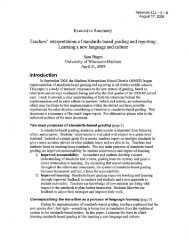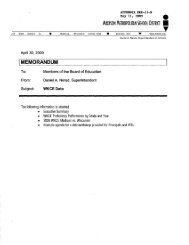MADISON METROPOliTAN SCHOOl DISTRICT - School Information ...
MADISON METROPOliTAN SCHOOl DISTRICT - School Information ...
MADISON METROPOliTAN SCHOOl DISTRICT - School Information ...
Create successful ePaper yourself
Turn your PDF publications into a flip-book with our unique Google optimized e-Paper software.
2. Ensure that intervention is provided K-12 in addition to core<br />
instruction to accelerate literacy learning by 2011-2012.<br />
Significant professional development was provided district-wide around the core<br />
concepts of Response to Intervention (Rtl). Central to Rtl is that adequate<br />
learning time of high quality, grade level core instruction is essential.<br />
Interventions should always supplement- not replace- core instruction.<br />
Therefore, students requiring intervention should have additional instruction<br />
outside of the 90 minute literacy block K-6 and should have interventions<br />
scheduled in addition to core Language Arts/Reading/English courses at the<br />
secondary level. Elementary, middle and high schools are working to provide<br />
even greater access to intervention blocks outside of core instruction for 2012-13<br />
through extensive planning with district and building Rtl Leadership Teams,<br />
scheduling innovations, and modifying existing allocations.<br />
Interventionist training was provided one Friday each month for all district<br />
interventionists, including Reading Recovery teachers and elementary and<br />
middle school interventionists. All new READ 180/System 44 teachers attended<br />
professional development at the beginning of each year. In addition, in 2011-12,<br />
all READ 180/System 44 teachers had at least one individualized coaching<br />
session provided on-site to help ensure fidelity to the research design.<br />
3. Screen all K-8 students for potential reading problems at the<br />
beginning of the year and again in the middle of the year (Tier 1 ).<br />
Screen 9-12 students as indicated by progress monitoring. Use<br />
the most developmentally appropriate measures for screening.<br />
K-2 students were universally screened using the Primary Language Arts<br />
Assessment (PLAA or Spanish PLAA) in 2011-12.<br />
See Appendix F for 2011-12 PLAAISPLAA data summary.<br />
All students in grade 3-7 were universally screened 3/times in 2011-12 using the<br />
Measures of Academic Progress - Reading.<br />
See Appendix G for 2011-12 MAP Reading RIT data summary.<br />
Students in grades 6-12 below proficiency are screened as needed using the<br />
Scholastic Reading Inventory (SRI) or the Scholastic Phonics Inventory (SPI) as<br />
a function of participating in the READ 180/System 44 intervention.<br />
sl



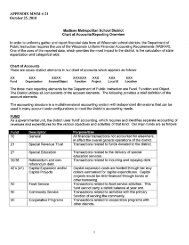
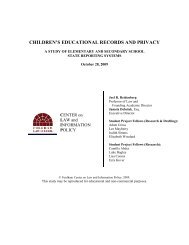


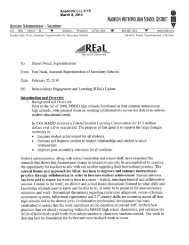
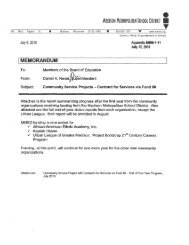
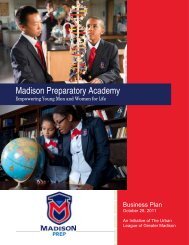
![by Shaina Wright [PDF] Ralph Waldo Emerson Prize 2006 - School ...](https://img.yumpu.com/26083584/1/174x260/by-shaina-wright-pdf-ralph-waldo-emerson-prize-2006-school-.jpg?quality=85)
